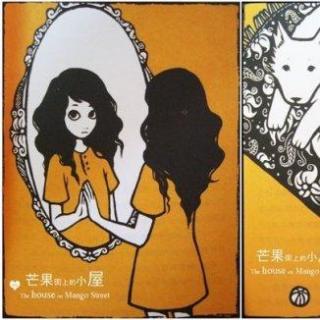
介绍:
《芒果街上的小屋》是美国作家桑德拉·希斯内罗丝创作的小说,一本记录着成长经历的少女日记,也是一部献给移民的——特别是那些处于边缘地位的拉丁裔女性的赞美诗。全书共由44个相对独立的短篇构成,所有故事基本发生在一条叫芒果街的芝加哥小街上,它们的记录和讲述者,是一个名叫埃斯佩朗莎的墨西哥裔小女孩。
这也是一个关于成长,关于在写作中追求现实和精神家园的故事。此书曾获1985年美洲图书奖,并很快被收入权威的《诺顿美国文学选集》,此后又进入大中小学课堂,作为阅读和写作的必读书广泛使用,成为美国当代最著名的成长经典。诗歌与小说的混血文字,质朴而优美,平易而启人心扉。
书中主人公的名字——埃斯佩朗莎,在西班牙语里是希望的意思。生活在芝加哥拉美移民社区芒果街的女孩埃斯佩朗莎,生就对他人痛苦的同情心和对美的感觉力,她用清澈的眼打量周围的世界,用诗一样美丽稚嫩的语言讲述成长、讲述沧桑、讲述生命的美好与不易,讲述年轻的热望和梦想。梦想有一所自己的房子,梦想在写作中追寻自我,获得自由和帮助别人的能力。
在书的扉页,作者写道:“我写的不单是美国的事情,也是你们的。我肯定,在中国,也有这样一条芒果街,陌生人去到那里时,会感到一种“恐外”氛围。尤其,在我们今天生活的世界中,如此多的群体在相互交融:城市居民与乡村居民、中产者与贫民、男人与女人。我们每天都在跨越疆域,甚至不用离开自己的家就这样做了。”
The House on Mango Street
We didn&`&t always live on Mango Street. Before that we lived on Loomis on the third floor, and before that we lived on Keeler. Before Keeler it was Paulina, and before that I can&`&t remember. But what I remember most is moving a lot. Each time it seemed there&`&d be one more of us. By the time we got to Mango Street we were six —— Mama, Papa, Carlos, Kiki, my sister Nenny and me.
The house on Mango Street is ours, and we don&`&t have to pay rent to anybody, or share the yard with the people down stairs, or be careful not to make too much noise, and there isn&`&t a landlord banging on the ceiling with a broom. But even so, it&`&s not the house we&`&d thought we&`&d get.
We had to leave the flat on Loomis quick. The water pipes broke and the landlord wouldn&`&t fix them because the house was too old. We had to leave fast. We were using the washroom next door and carrying water over in empty milk gallons. That&`&s why Mama and Papa looked for a house, and that&`&s why we moved into the house on Mango Street, far away, on the other side of town.
They always told us that one day we would move into a house, a real house that would be ours for always so we wouldn&`&t have to move each year. And our house would have running water and pipes that worked. And inside it would have real stairs, not hallway stairs, but stairs inside like the houses on T.V.And we&`&d have a basement and at least three washrooms so when we took a bath we wouldn&`&t have to tell everybody. Our house would be white with trees around it, a great big yard and grass growing without a fence. This was the house Papa talked about when he held a lottery ticket and this was the house mama dreamed up in the stories she told us before we went to bed.
But the house on Mango Street is not the way they told it at all. It&`&s small and red with tight steps in front and windows so small you&`&d think they were holding their breath. Bricks are crumbling in places, and the front door is so swollen you have to push hard to get in. There is no front yard, only four little elms the city planted by the curb. Out back is a small garage for the car we don&`&t own yet and a small yard that looks smaller between the two buildings on either side. There are stairs in our house, but they&`&re ordinary hallway stairs, and the house has only one washroom. Everybody has to share a bedroom—Mama and Papa, Carlos and Kiki, me and Nenny.
Once when we were living on Loomis, a nun from my school passed by and saw me playing out front. The Laundromat downstairs had been boarded up because it had been robbed two days before and the owner had painted on the wood YES WE&`&RE OPEN so as not to lose business.
Where do you live? She asked.
There, I said pointing up to the third floor.
You live there?
There. I had to look to where she pointed –—— the third floor, the paint peeling, wooden bars Papa had nailed on the windows so we wouldn&`&t fall out. You live there? The way she said it made me feel like nothing. There. I lived there. I nodded.
I knew then I had to have a house. A real house. One I could point to .but this isn&`&t it. The house on Mango Street isn&`&t it. For the time being, Mama says. Temporary, says Papa. But I know how those things go.
大家还在听

